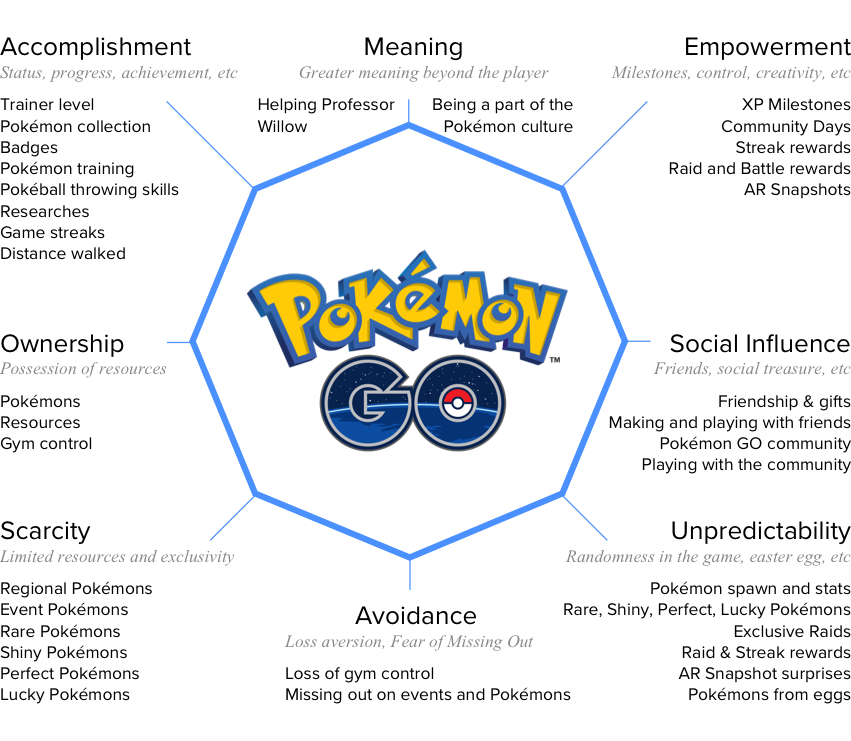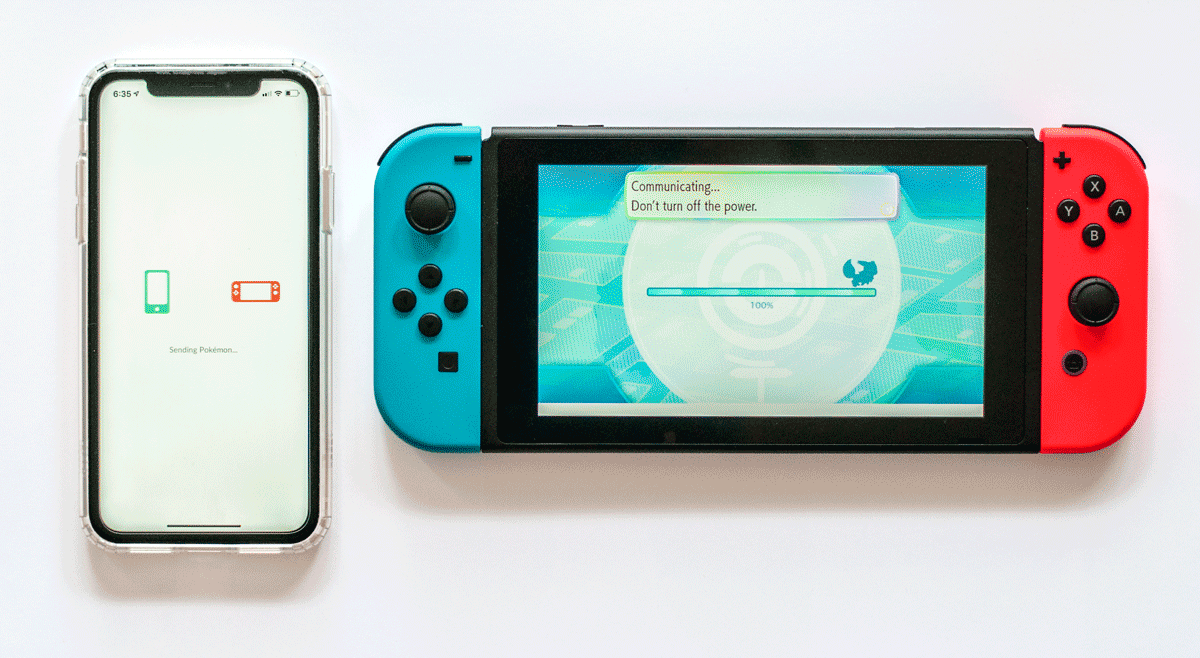Pokémon GO — Past Hype And Novelty
3 key takeaways on designing location-based AR games
Photo by Austin Pacheco on Unsplash
It has been almost 3 years since the release of Pokémon GO, a location-based AR mobile game that became an international sensation and is still one of the top grossing apps in app stores. While the novelty has passed for a sizable number of initial avid players, a dedicated following persists.
As my very first Pokémon game, Pokémon GO was my initiation to the entire Pokémon kingdom. Almost three years later, here I am as a level 40 trainer who takes great pride and joy in this identity. Here are my three key takeaways from Pokémon GO that every location-based AR game can seek inspiration from.
1. A Game That Evolves While Maintaining Its Core Values
Games, by their very nature, invite participation. A game holds great narrative power to bring its participants to partake in a commonly–agreed upon set of rules, just like our societies.
As location-based AR games superimpose their gamespace onto the real world, any small decision made in the game can bring huge real-world implications to the player and their surroundings. Case in point, you might still remember this YouTube video of Pokémon trainers in Taiwan rushing to catch a Snorlax when the game first came out:
The game has gone through numerous updates and rule reinventions since its initial release. Here is a brief audit of the latest features in Pokémon GO (version 1.105.2) using the Octalysis Framework by gamification expert Yu-kai Chou:
Like a society that constantly updates its rules and policies, Pokémon GO updates its rules to foster more desirable player behaviors — not just to benefit the game maker and its bottom line but also to benefit the physical and mental wellness of its players.
Image: Niantic
For example, Pokémon GO’s old gym system encouraged a hoarding behavior, where high-level trainers trained specific powerful Pokémons to stay in gyms daily to get coins. Lower-level trainers were disadvantaged when they couldn’t compete on their frequency of play and on the strength of their Pokémons, hence missing out and gradually became disuaded to play or venture to those gyms. A mid-2017 gym reward system revamp not only invited a diversity of Pokémons in gyms, but also incentivized a timely exit out of gyms. Suddenly, what used to be toxic self-centered competitive play that only favored the strong became collaborative and constructive, where everyone could enjoy the game.
Similarly, Pokémon GO’s addition of a Raid system in the same update introduced a new norm where trainers from all teams needed each other to defeat strong bosses to capture and collect them. The game’s subsequent introduction of new features such as field researches, special researches, friends, and PvP battles all allow trainers to explore and play at their own pace, regardless of their skill levels, preferences, or motivations.
The constant fine-tuning of game rules is a huge deal because of the real-world impact of location-based games. Assisted by Machine Learning, game makers can identify behavioral patterns faster and make prompt and informed adjustments to course-correct and promote more desirable play. In other words, change is the only constant and should reflect socially-responsible design and experience crafting.
2. A Game That Facilitates Cross-Platform Collective Play
Simply speaking, Pokémon GO is a game where players use mobile devices with AR technology to play out a narrative in the real world.
On the player level, the game facilitates both solitary play, where a player can engage in individual play without necessarily interacting with other players, and social play, where a player can participate in group-based activities in-game and in the real world. Features and activities such as friends, PvP battles, Community Day, and GO Fest encourage real and virtual collective gameplay and transform how strangers relate to each other (Reijers & Coeckelbergh, 2018).
Hardware-wise, additional accessories such as Pokémon GO Plus, Gotcha, and Poké Ball™ Plus augment the player’s immersive gameplay by adding haptics, light, and sound (in the case of Poké Ball™ Plus) and freeing the players from constantly needing to stare at their game on the screen.
But what’s really exciting is that Pokémon GO takes gameplay further with cross-platform crossplay between mobile devices and consoles, during which the devices exchange game resources — although currently limited to Pokémon and mythical box— to advance their shared narrative.
This is a significant gesture toward an integrated play experience, and a hint at the beginning of an industry shift away from a single native console platform and to allow players to freely move between platforms of their choice. One comparison that comes to mind is the previous unbundling of mobile carrier networks in the United States. The blurring of platform boundaries invites game developers and players alike to reimagine how games can be played on otherwise isolated individual platforms and encourages new opportunities in designing a seamless crossplay experience in the gamesphere.
3. A Game That Gives Back After Collecting Player Data
Pokémon GO tracks my steps and walking distance in the app without me having to keep the app open. It also effectively motivates me to go out on the weekends because I have to get out there to get certain rewards. (Full disclosure: sometimes this game is the only reason why I leave my apartment on the weekends.) Essentially, this game is my fitness tracker.
In a recent update, Pokémon GO made concrete the immediate benefits of a player’s walking distance by rewarding them with extra resources per week depending on the distance walked. Compared to my Apple Health app that does nothing more than showing me numbers and bar graphs, Pokémon GO translates fitness tracking into understandable, relatable, and enjoyable progress and communicates a sense of compelling urgency for players’ physical activities.
We already know that our personal data is constantly harvested for a multitude of commercial uses. Notably, a New York Times article described how our geo-data is being tracked, used, and sold after we have no choice but to hit “I Agree” when opting to use certain services.
For a location-based game, the tracking and collection of players’ location data are integral to the gameplay. Pokémon GO’s game mechanism exemplifies a courteous gesture to collected player data and proves that data collectors can make players feel compensated for their personal data and the compensation relevant.
Closing Thought
While still having imperfections, Pokémon GO has been a forerunner in experimenting with the design of location-based AR games. As new technology such as the 5G network and cloud computing continue to improve the infrastructure of our data exchange, we can easily see more real-time location-based games coming to the table. The latest news has it that Pokémon GO’s developer, Niantic, is soon releasing a Harry Potter-based AR game, “Harry Potter: Wizards Unite”.
What are your thoughts on designing location-based AR games? I’d love to learn from you.
(This post was originally published on my Medium.)





